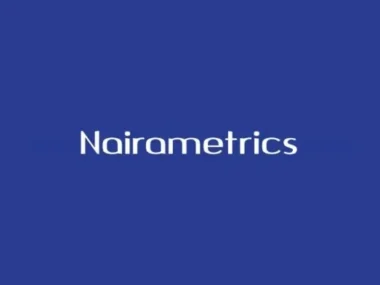Are you dreaming of working abroad in the USA, UK, Canada, or Australia but not sure how to get a job with visa sponsorship? You’re not alone. Every year, thousands of skilled professionals successfully secure international employment through sponsored visas. This in-depth, SEO-optimized guide will walk you through the entire process—from understanding visa sponsorship to finding the right job and getting hired.
Whether you’re a recent graduate, an experienced worker, or a digital nomad seeking a career change, this article is packed with actionable insights and practical tips tailored for a global audience.
Table of Contents
- What Is Visa Sponsorship?
- Why Work Abroad in 2025?
- Country-by-Country Breakdown
- USA
- UK
- Canada
- Australia
- How to Find a Sponsored Job
- How to Apply for Jobs With Sponsorship
- Top Industries Hiring Foreign Workers
- Visa Types & Eligibility
- Tips to Stand Out to Employers
- Resume and Interview Advice
- Mistakes to Avoid
- Success Stories
- 20 Frequently Asked Questions (FAQs)
What Is Visa Sponsorship?
Visa sponsorship means that a company or organization is willing to support your visa application so you can legally work in their country. It often includes paperwork, government submissions, and sometimes covering visa fees or relocation costs.
Benefits of Visa Sponsorship
- Legal permission to work
- Opportunity to build international experience
- May lead to permanent residency
Why Work Abroad in 2025?
In 2025, the global job market is recovering and expanding in industries like technology, healthcare, engineering, and finance. Countries like the USA, UK, Canada, and Australia are actively seeking skilled workers to fill talent shortages.
Key Advantages
- Competitive salaries
- Global work experience
- Enhanced quality of life
- Cultural exposure and personal growth
Country-by-Country Breakdown
USA: The Land of Opportunities
Popular Visa Types:
- H-1B (Specialty Occupations)
- L-1 (Intra-company Transfers)
- O-1 (Extraordinary Ability)
Who Can Apply:
- Tech professionals
- Healthcare workers
- Researchers
Top Companies Offering Sponsorship:
- Amazon
- Microsoft
Useful Sites:
UK: Innovation & Financial Hub
Popular Visa Types:
- Skilled Worker Visa
- Global Talent Visa
- Health and Care Worker Visa
Eligible Roles:
- IT and Tech
- Finance and Accounting
- Healthcare
Top Hiring Companies:
- HSBC
- Deloitte UK
- NHS
Resources:
Canada: Immigrant-Friendly Destination
Visa Types:
- Temporary Foreign Worker Program (TFWP)
- Global Talent Stream
- Express Entry (job offer boosts score)
High-Demand Jobs:
- Truck drivers
- Nurses
- Software developers
Top Employers:
- Shopify
- RBC
- Bell Canada
Job Boards:
Australia: High Quality of Life
Work Visa Options:
- Temporary Skill Shortage Visa (TSS, subclass 482)
- Employer Nomination Scheme (subclass 186)
In-Demand Occupations:
- Engineers
- IT professionals
- Construction workers
Hiring Companies:
- Commonwealth Bank
- Telstra
- Rio Tinto
Helpful Sites:
How to Find a Sponsored Job
1. Use the Right Job Boards
- LinkedIn (Use filters like “Visa Sponsorship”)
- Indeed and Glassdoor (search with keywords like “visa sponsorship”)
- Relocate.me (tech jobs)
- Jobbatical (remote and relocation)
2. Apply to Multinational Companies
Big brands are more likely to have sponsorship processes in place.
3. Target Countries with Skills Shortages
Check government occupation shortage lists for roles in demand.
How to Apply for Jobs With Sponsorship
1. Prepare a Global Resume
- Highlight international experience
- Use metrics to show results
2. Craft a Customized Cover Letter
- Mention interest in the specific country and company
- Address visa sponsorship directly but briefly
3. Apply Through Official Channels
- Use career portals, not third-party agencies
4. Be Honest About Visa Needs
- Recruiters appreciate transparency
Top Industries Hiring Foreign Workers in 2025
- Technology (Developers, AI, Cybersecurity)
- Healthcare (Nurses, Doctors, Technicians)
- Engineering (Civil, Mechanical, Electrical)
- Education (ESL Teachers, Professors)
- Finance (Accountants, Analysts)
- Hospitality (Chefs, Hotel Managers)
Visa Types & Eligibility Requirements
USA
- Bachelor’s degree or equivalent
- Employer must file petition
UK
- Job offer from a licensed sponsor
- English language requirement
Canada
- Positive Labour Market Impact Assessment (LMIA)
- Employer must be LMIA-approved
Australia
- Occupation must be on the Skilled Occupation List
- Employer must be approved sponsor
Tips to Stand Out to Employers
- Build a Global LinkedIn Profile: Include country preferences.
- Get Certifications: AWS, PMP, IELTS, etc.
- Practice Interview Skills: Especially behavioral and visa-related questions.
- Use Keywords: Match job descriptions to beat applicant tracking systems (ATS).
Resume and Interview Advice
Resume Tips
- Use a clean, modern layout
- Focus on accomplishments over tasks
Interview Tips
- Be ready to explain why you want to relocate
- Research the company’s international workforce
Mistakes to Avoid
- Not tailoring your resume to the job
- Ignoring time zones or local customs during interviews
- Applying to companies that don’t sponsor visas
- Misrepresenting your eligibility
Success Stories
Case 1: Software Engineer from India to the USA
“After six months of applying, I got an offer from a startup that helped with my H-1B. LinkedIn networking and customizing my resume were key.”
Case 2: Nurse from the Philippines to Canada
“Canada’s Global Talent Stream helped me get a job in a rural clinic. I used jobbank.gc.ca to find listings that matched my experience.”
Case 3: Teacher from Nigeria to the UK
“I applied directly to school district websites and got sponsored under the Skilled Worker Visa. The application took 3 months.”
20 Frequently Asked Questions (FAQs)
- What does visa sponsorship mean?
It means an employer supports your work visa to legally employ you in their country. - Is visa sponsorship the same as a work permit?
No. Sponsorship is the employer’s support; the work permit is the actual legal document. - Do all companies offer visa sponsorship?
No. Usually only larger or international companies do. - Can I apply for a sponsored job from outside the country?
Yes. Many employers interview and sponsor foreign applicants remotely. - How long does the sponsorship process take?
It can range from a few weeks (Canada, Australia) to several months (USA). - What documents do I need for visa-sponsored jobs?
Resume, passport, degree certificates, references, sometimes proof of experience. - What are the best websites for sponsored jobs?
LinkedIn, Indeed, JobBank Canada, myvisajobs.com, Relocate.me. - Do I need IELTS or TOEFL?
Yes, especially for English-speaking countries like the UK, Canada, and Australia. - Is it easier to get sponsorship in Canada or the USA?
Canada has more relaxed immigration policies, making it easier for many applicants. - Can I bring my family with a sponsored job?
Yes, most work visas allow dependents to join. - What industries hire foreigners the most?
Technology, healthcare, engineering, education, and finance. - Can a sponsored job lead to permanent residency?
In many cases, yes—especially in Canada and Australia. - Can I switch employers on a sponsored visa?
Usually yes, but you may need a new sponsorship. - Do remote jobs offer visa sponsorship?
Rarely. Visa sponsorship is typically for on-site roles. - Is age a factor in getting visa sponsorship?
Not directly, but some countries have age limits for immigration programs. - What’s the best time to apply for sponsored jobs?
Early in the year or just before major hiring seasons (Jan–Mar, Sep–Oct). - Should I pay for visa sponsorship?
No. Legitimate employers cover sponsorship costs. Avoid agencies asking for fees. - What if I get rejected?
Try again. Improve your resume, target other companies, and consider feedback. - Do internships lead to sponsorship?
Sometimes. Interning can be a pathway to full-time roles with sponsorship. - Can I study first and then get sponsored?
Yes. Many graduates switch to work visas after completing education abroad.


